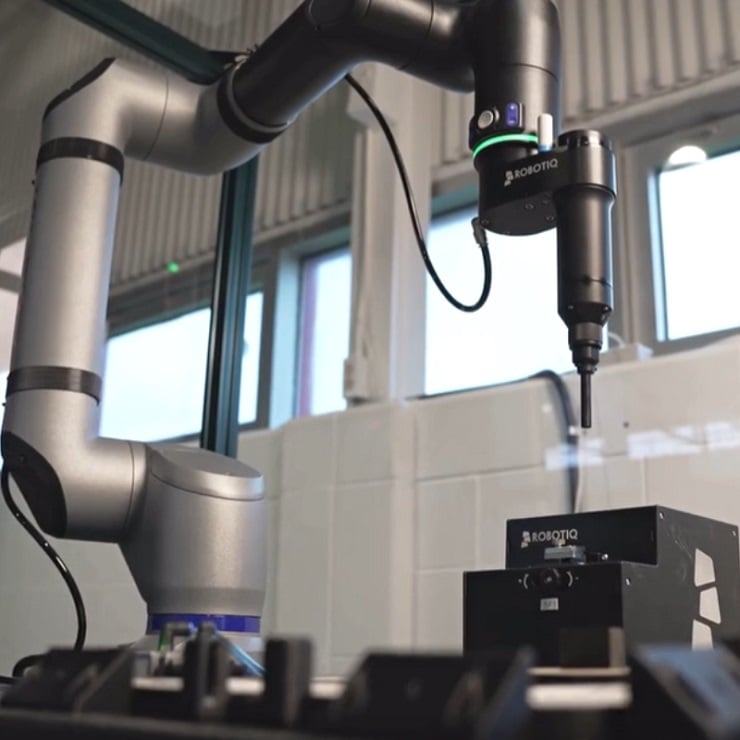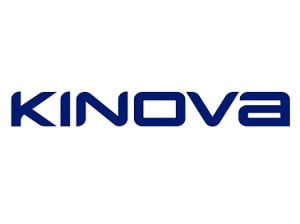
Surgical robotics and industrial automation are two distinct domains that may seem worlds apart, but upon closer examination, reveal striking similarities. Both fields harness the power of automation, precision, and robotics to enhance efficiency, safety, and precision. Kinova’s inception and growth have been in medical robotics. Nonetheless, the company decided a few years ago to offer its robotic technologies and engineering services for Industrial OEM customers. Why is that? In this article, we’ll explore these shared traits and discover how they are transforming the world of healthcare and manufacturing.
Precision and Accuracy
Surgical robotics and industrial automation are built upon the foundational principles of precision and accuracy. In the world of surgery, a robot-assisted system offers a surgeon a level of precision that human hands alone cannot achieve. Robotic surgical systems can perform delicate maneuvers with sub-millimeter accuracy, reducing the risk of human error. Similarly, in industrial settings, automated systems can manufacture products with incredible precision, ensuring consistency and quality at levels that humans simply cannot match.
Minimally Invasive Procedures
One of the most remarkable similarities between surgical robotics and industrial automation is their ability to perform minimally invasive procedures. In surgery, robotic systems enable surgeons to make smaller incisions, reducing trauma to the patient, and speeding up recovery times. Likewise, in manufacturing, automation allows for the production of smaller, more intricate components and products with greater efficiency and precision.

Real-time Data and Feedback
Both fields heavily rely on real-time data and feedback to make informed decisions. In surgery, robotic systems provide surgeons with detailed information about the patient’s anatomy and the progress of the procedure. This enables them to adjust their approach as needed. In industrial automation, sensors and monitoring systems provide real-time data on machinery performance, helping operators detect and address issues promptly, thereby minimizing downtime and maximizing productivity.
Improved Safety
Safety is a paramount concern in both surgical robotics and industrial automation. In surgery, robotic systems are equipped with safety features such as collision detection and fail-safes to prevent accidents. In manufacturing, automated systems are designed to operate in hazardous environments, reducing the risk of injury to human workers. This shared commitment to safety underscores the potential benefits of automation in various industries.
Remote Control and Teleoperation
Surgical robotics and industrial automation have also embraced remote control and teleoperation. Surgeons can now perform surgeries from remote locations using robotic systems, allowing them to reach patients in remote or underserved areas. Similarly, industrial automation enables remote monitoring and control of manufacturing processes, reducing the need for on-site personnel and improving efficiency.
Training and Skill Development
Both fields require specialized training and skill development. Surgeons need to undergo extensive training to operate robotic surgical systems effectively. Likewise, technicians and engineers in the industrial automation sector require specialized knowledge to design, program, and maintain automated systems. These skill sets are in high demand as automation continues to expand its reach.

Surgical robotics and industrial automation may serve different purposes, but they share remarkable similarities in their pursuit of precision, safety, efficiency, and innovation. As technology continues to advance, we can expect to see even more convergence between these two fields, leading to exciting breakthroughs in healthcare and manufacturing. Kinova’s unique positioning in the market is tailored to have both industries benefit from the innovations of one and the other. The future holds immense potential for the synergy between surgical robotics and industrial automation to drive progress and improve the quality of our lives.









